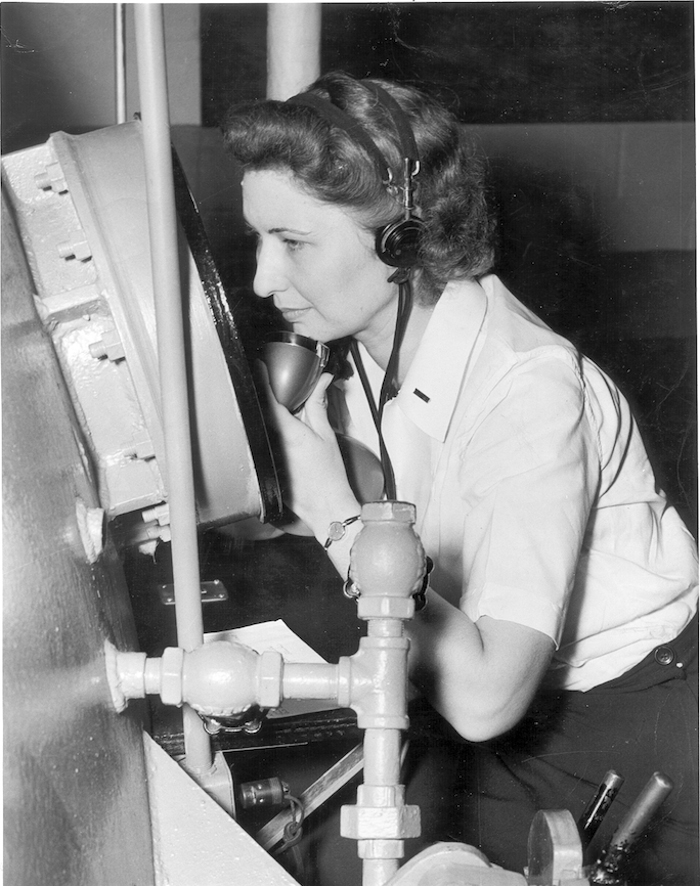One day, the phone in my South Carolina office rang, and when I answered, a senior voice greeted me: “Hello, I saw your name in the newspaper, and I believe we may be related. My maiden name was Jean Prosch.”
She lived less than an hour’s drive away, so over the course of several months, whenever time allowed, I visited Jean in her small efficiency apartment. When she decided to move back home to New Jersey, I dropped in to wish her safe travels.
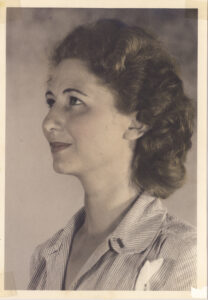
“I’ll be in touch with more stories,” she said. “There’s so much more to tell.”
Having already learned a great deal about Jean’s life of service as a teacher and after World War II, I wondered how many more stories she had to tell.
“All of them,” she told me. “All the stories you do not know.”
Joining the WAVES
In July 1942, President Roosevelt authorized a women’s branch of the U.S. Naval Reserves: Women Accepted for Volunteer Emergency Service (WAVES). Women ages 20 to 49 with a college degree (or two years of college and equivalent experience) could enlist as commissioned officers.
Armed with a bachelor’s degree from Rutgers and a master’s from Temple, Jean Prosch more than met the qualifications, and she was eager to use her abilities as an educator to aid the American war effort. She decided to join the WAVES.
In April 1943, Jean contacted the Naval Procurement Office in Philadelphia, beginning the enlistment process. A month later, she was sworn in to the United States Navy. On Mother’s Day 1943, she told her family what she’d done, and she reported for duty on July 3.
On the 12:15 p.m. train to Northampton, Massachusetts, she fully realized her career—and life—had turned a corner. She was underway.
“Scared—a little. But enthusiastic and proud.”
Officer Training School
During the war, WAVES trained at Smith and Mount Holyoke, and Jean was assigned to the latter. Her days began with a 6:15 a.m. wake-up call, and other than 45 minutes of liberty, her time was filled with classes in Naval Organization, Personnel, Naval Law, and Ships and Aircraft Classification until the call for lights-out sounded at 10 p.m.
On August 24, 1943, she received her commission, writing home: “It seems Ensign Prosch is to report Monday morning August 30 to the Naval Air Station at Jacksonville, Florida, and if you aren’t excited—I am.”
Hello JAX!
When Jean arrived at Jax NAS (Jacksonville Naval Air Station), though she was in Personnel, not Health, she was assigned to the Aviation Medicine Section.
Unlike today, during the 1940s, the use of oxygen during high-altitude flight was cutting-edge technology. Navy pilots and air crewmen were required to learn about aviation physiology and take a run in the low-pressure chamber and chill room. If Jean was going to assume a teaching position, she’d need to take a training run herself. She wrote home, “They’ve never had a woman in [the low pressure chamber] and are all eager to see what’s what. Ha! Ha! I’m the guinea pig.”
On September 13, 1943, Jean had her first experience with low pressure, experiencing the same chamber run as the dive bombers, gunners, and pilots: a simulated 18,000 feet without oxygen, then 30,000 feet with oxygen. Then the descent—at 4,000 feet per minute.
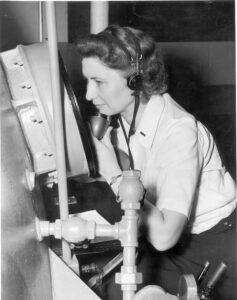
But in order to teach her students most effectively, Jean needed practical experience—actual flight time.
She wrote home on September 25, “Had a most exciting day today! Was the first WAVE to go on a high altitude oxygen hop in a real airplane. I was up in a Navy plane for four hours—at high altitude necessitating use of O2 equipment for 1 1/2 hours. They took three pictures of me, so I might make the news.”
She made history that day, and was soon to contribute more.
During the early years of the war, the Navy was losing too many pilots and planes, not to enemy fire, but to crashes caused by high altitude anoxia, which caused poor motor coordination, impaired vision, and decreased executive function.
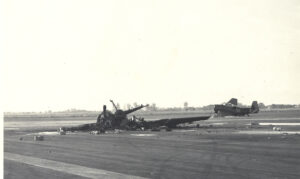
Enter Jean and the low-pressure chamber.
These simulated, high-altitude training runs proved to pilots and their crews that they could not self-diagnose anoxia before they were in imminent danger of losing consciousness. By then, they were too uncoordinated to get their equipment on.
In Jean’s simulations, fliers passed out; in an actual flight, people could, and did, die.
Jean thrived in her job and taught hundreds of navy flyers to respect their need for high-altitude oxygen equipment.
When low-pressure chamber work was moved from Personnel to Health in 1944, Jean declined the transfer since her primary interest was teaching, not physiology.
The question was—after attaining such heights, where would she land?
Fort Lauderdale and Flight Analysis
Farther down the Florida coast at
was the head of aviation training. Under the direction of Admiral McFall, Jurika was to address the serious topic of training accidents in a new area of naval aviation study called Flight Analysis.
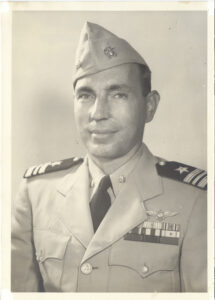
Jean’s work with the low-pressure chamber gave her an understanding of the physiology of flight and the psychology of Navy fliers; she was the ideal candidate for the new position. Thanks to her request to remain assigned to Personnel, she was available for transfer when Jurika came looking for someone to fill the newly created role of Crash Analysis Officer.
Jean wrote, “It’s a new program to try to cut down air accidents—there are so many in operational training—and this is the operational training command. It’s a program to weed out fliers before they kill themselves, a crew, and ruin a plane.”
Upon her arrival at Fort Lauderdale, Jean immediately became a permanent member of the Crash Board and also of something called “the Trouble Board.”
At Fort Lauderdale NAS, Jean found her calling working with flight instructors and analyzing student pilot performances. From February 1944 through the end of the war, Jean’s work was grueling and intense.
She wasn’t always the most liked officer on base, but in terms of lives saved, she might have been one of the most important, graphing hard data points and bringing a sense of objectivity to decisions about which aviators should remain—and which men should be “washed out.”
She wrote to her family, “It kills me when we lose aircrew men. They’re more valuable than the pilots—and are at the mercy of the pilot’s headwork and judgment.” Unfortunately, too often, she saw the horrific results of bad judgement first-hand. “I have to be on my toes—don’t dare slip up.”
Going Home
As the war came to a close, Jean looked forward to civilian life. Though she loved her work in aviation, the training crashes and proximity to death took a toll, and she eagerly anticipated her discharge in December 1945 and a return to civilian life.
In February 1946, one of Jean’s former colleagues wrote to let her know that Fort Lauderdale NAS had received the inaugural Single Engine Safety trophy for an outstanding safety record for the period of July 1945 to January 1946. The letter enclosed read, “It is our sincere belief that you contributed more than any other one person toward the winning of this trophy.”
All veterans have stories to tell, and many of those stories are taken to their graves. But in an age when women often achieved more than was publicly acknowledged, Jean Prosch was there.
And hers is only one of many stories that we now do know.
Gina Prosch is the parent of a homeschooled senior. She co-hosts “The OnlySchoolers Podcast: Helping You Homeschool” (OnlySchoolers.com) and is the author of several books, including the forthcoming “JOY! You Find What You Look For” from Boys Town Press. Gina works as a homeschool parent life coach and blogs at TheHomeschoolWay.com

